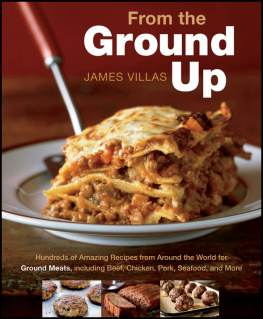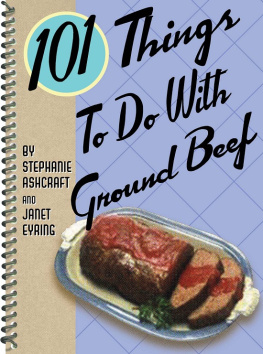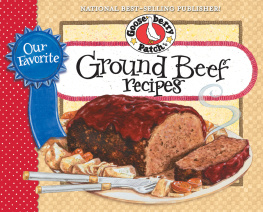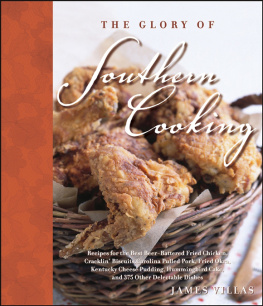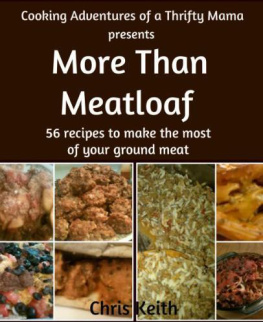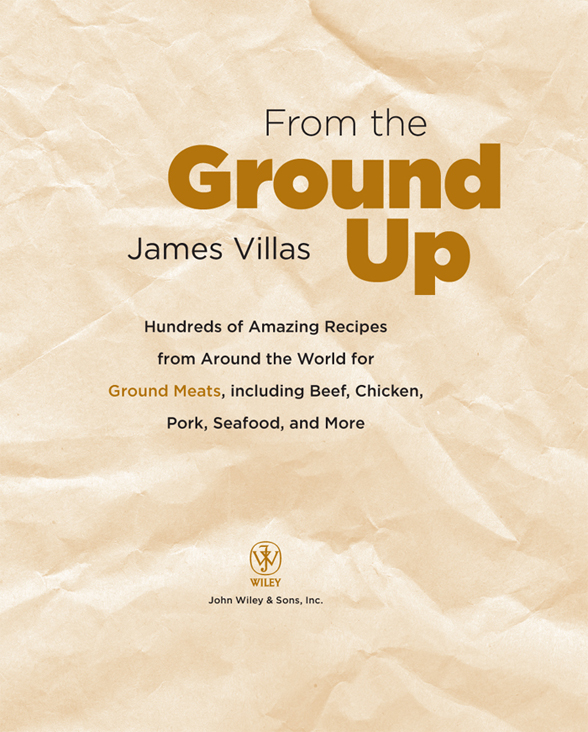
John Wiley & Sons, Inc.
This book is printed on acid-free paper. 
Copyright 2011 by James Villas. All rights reserved
Published by John Wiley & Sons, Inc., Hoboken, New Jersey
Published simultaneously in Canada
No part of this publication may be reproduced, stored in a retrieval system, or transmitted in any form or by any means, electronic, mechanical, photocopying, recording, scanning, or otherwise, except as permitted under Section 107 or 108 of the 1976 United States Copyright Act, without either the prior written permission of the Publisher, or authorization through payment of the appropriate per-copy fee to the Copyright Clearance Center, Inc., 222 Rosewood Drive, Danvers, MA 01923, (978) 750-8400, fax (978) 646-8600, or on the web at www.copyright.com. Requests to the Publisher for permission should be addressed to the Permissions Department, John Wiley & Sons, Inc., 111 River Street, Hoboken, NJ 07030, (201) 748-6011, fax (201) 748-6008, or online at http://www.wiley.com/go/permissions.
Limit of Liability/Disclaimer of Warranty: While the publisher and author have used their best efforts in preparing this book, they make no representations or warranties with respect to the accuracy or completeness of the contents of this book and specifically disclaim any implied warranties of merchantability or fitness for a particular purpose. No warranty may be created or extended by sales representatives or written sales materials. The advice and strategies contained herein may not be suitable for your situation. You should consult with a professional where appropriate. Neither the publisher nor author shall be liable for any loss of profit or any other commercial damages, including but not limited to special, incidental, consequential, or other damages.
For general information on our other products and services or for technical support, please contact our Customer Care Department within the United States at (800) 762-2974, outside the United States at (317) 572-3993 or fax (317) 572-4002.
Wiley also publishes its books in a variety of electronic formats. Some content that appears in print may not be available in electronic books. For more information about Wiley products, visit our web site at www.wiley.com.
Library of Congress Cataloging-in-Publication Data
Villas, James.
From the ground up / James Villas.
p. cm.
Includes index.
ISBN 978-0-470-57165-1 (pbk.)
1. Cooking. 2. Cookbooks. I. Title.
TX714.V5436 2011
641.5dc222010036221
Printed in the United States of America
10 9 8 7 6 5 4 3 2 1
For
JEAN ANDERSON
Peerless Food Expert,
Fellow Tar Heel, and
Beloved Friend
Preface
Just a couple of years ago, my personal passion alone for dishes featuring ground meats, poultry, and seafood would have been reason enough to write a comprehensive, international cookbook on the subject. Today, however, in a lean age of rampant inflation, when a single sirloin strip steak in the supermarket easily costs $15.00, a pound of bacon can set you back six bucks, whole organic chickens and deli chicken salad are more than $6.00 a pound, and both fresh shrimp and lobsters are priced as luxury foods, the topic of economical ground meats has almost a timely urgency about it. And even if the wolf were not hovering at the door these days, I would still insist that a fascinating style of cooking has been at best trivialized and at worst sadly neglected for far too long.
For most American cooks, ground or chopped meats, poultry, and seafood mean only burgers, meat loaf, meatballs, chili, possibly chicken or turkey salad and clam dip, and few are even aware that some of the most glorious and unusual dishes in the international culinary repertory are based exclusively on a vast array of ground, chopped, minced, diced, and shredded items. From the lowliest American hashes and fish cakes, British pasties and rissoles, German molds and sausages, and South American fritters and puddings, to more sophisticated French terrines and souffls, Italian pasta stuffings and rag , Greek dolmades, and certain Indian lamb curries, the variety of delectable specialties is utterly staggering. In fact, Ill go so far as to argue that ground meat, poultry, and seafood dishes constitute a veritable global cuisine in themselves, and that, faced with an ever-expanding inventory of reasonably priced ground beef, veal, pork, lamb, chicken, and turkey now available in all supermarkets, adventurous cooks today are ready to be introduced to authentic Cajun boudin and Charleston hobotee, English and Canadian ground meat and seafood pies, Spanish potted minced meats, French seafood quenelles, Italian poultry cannelloni, Hungarian meat and seafood croquettes, and various Russian and Asian rolls and balls.
While the main objective in this book is to provide lots of easy, straightforward, and blessedly economical recipes for delectable dishes from around the world based on all the packaged staples found in our markets, it is also my purpose to encourage you to develop the habit of grinding, mincing, and chopping some of your own ingredients, much the same way that more and more serious cooks are now putting up pickles and preserves, making genuine yeast breads, smoking their own meats, and foraging for wild fruits and nuts. First, the major advantage of using a manual or electric food grinder or food processor is that it allows you not only to choose exact cuts and portions of meat, poultry, or seafood to be ground but also the freedom to control ingredient proportionsfats, seasonings, and other additivesand textures. Second, the truth is that even the most helpful butchers will rarely custom-grind any raw poultry, fresh seafood, or special cuts of pork as a precaution against cross-contamination of other meats ground in the same machine, so that when it comes to making most of the wonderful sausages in this book, your only option is a reliable grinder or food processor. And third, there can be no question as to the thriftiness of processing your own ingredients, especially when theyre found on sale in the market. As anyone knows whos ever turned out a silky shrimp or tangy ham spread, spicy pork tacos or crusty salmon croquettes, or, perhaps most important of all, a freshly ground all-American hamburger with just the right texture and flavor, nothing is more delicious, satisfying, and, yes, fun than dishes prepared from scratch.
Since there are so many variables in the ingredients, equipment, cooking techniques, and even terminology pertaining to the production of ground dishes, I cant emphasize enough the importance of carefully reading the Introduction of this book before making your first canaps; creating your first sumptuous loaf, casserole, or souffl; stuffing your first pasta or vegetable; and grinding meats or seafood for your first turnovers and sausages. Not, by any means, that many of the recipes are particularly challenging or time-consuming, but the information and tips provided will quickly familiarize you with most of the basics involved in this exciting style of cooking.
Over the years, Ive encountered other champions of ground dishes, but perhaps none was so zealous as the legendary cookbook author and food editor of The New York Times , Craig Claiborne. Here was an intrepid gourmand who had sampled, cooked, and relished every exotic edible from French coulibiac of salmon to Greek lambs head soup to Chinese sea slugs, yet when we were sipping Champagne one evening and I asked Craig to name his absolute favorite dish in the entire world, he didnt blink an eye before answering, Anything made with ground meat. Once you, too, delve into some of the toothsome dishes in this book, I think youll understand what he meant.

